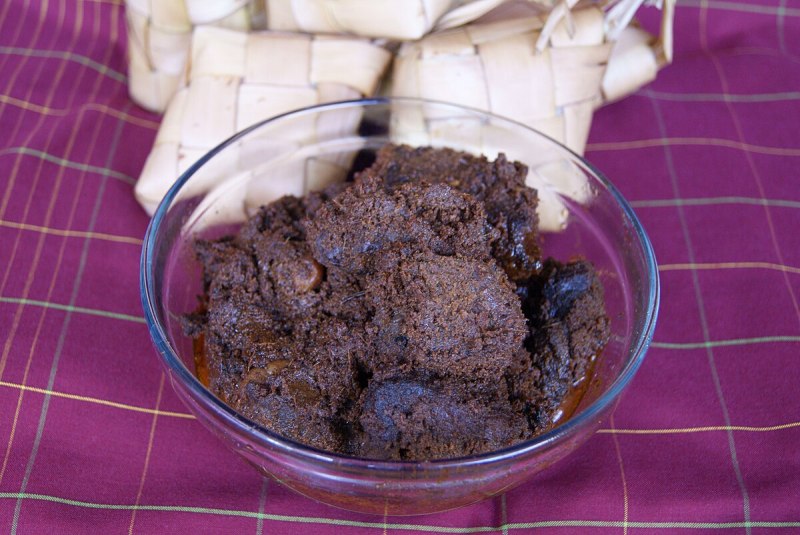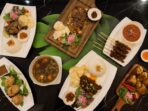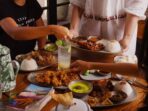Indonesia Food Wiki – This article concerns the snack of Indonesia. For the Malaysian version, Singapore, Brunei, see Kuih. For the post near the East, go to Qwê.
The Kue is a snack or a dessert as much as it comes from Indonesia, but has been broadcast throughout Southeast Asia since then. Kue is a relatively wide term in Indonesia to describe a wide range of snacks, including cakes, cookies, glaciers, cakes, pots and patches.
Indonesia Food Wiki
These are popular snacks in Indonesia that have the most types of kue. Due to the historic colonial relations of countries, Kue is also popular in the Netherlands.
Ciki Wiki Chiken Nugget Dino / Happy Star 250 Gram
Indonesian Kuwaiti shows local indigenous delights, Chinese and Indian tracks as well as European cakes and cakes and pastries. For example, Wajik, Kue Bugis, Klepon, Nagasari, Getuk and Lupis are indigenous. While Bakpia and Kue Ku come from the origin of Chinese Pranakan, Kue Putu is taken from Indian puttu. On the other hand, Lapis Legit, Kue Cubit, Kastgel, Risoles and Pastel Europemain.
It is a word of Chinese loan in Indonesian. He is also called Kuih in Malaysia and Kueh in Singapore. Kue is more steamed than cooked, so it is very different in the texture, taste and appearance of Western cakes or puffy pastries. Many kue are soft, but some are intelligent.
However, the word kue in Indonesia refers not only to these traditional snacks but also to a variety of cakes and some candies. Most Kue Kerying are technically sweet and many Western cakes can be considered Kue Basah.
The first record of the ancestral form of Kue as a soft snack in the ninth Javanese period Javanese Kakawin Ramayana of the kingdom of Mataram, is in the case of Sagula Modakanda, which means sweet specialties.
Ciki Wiki Nuget 250gr
Sweet snacks and behaviors are currently used in Java Ancit. In fact, the main ingredients of Java Kue generally contain glutin rice, coconut milk and palm sugar (Gula Jawa). All common products are agricultural in Java. The combination of these three essential substances of the Java cultural heritage is clearly known before external interruptions.
According to Harry Prihatmuko, historian at the University of Sanata Dhara in Yogiacarta, Juanusi Copam has existed from the ancestral kingdom of Mataram, which has been kept in the Mataram period to date. KUE APEM is in a number of royal rituals of Java as suggestions, especially when commemorating the king or the Asiak on the throne before Ramadan.
Kue Kue Javanese is an Indian Appam, which has probably occurred at the same time as the Hindu-Biadist blood flow to Java on the seventh or eighth culture.

Wajik’s first record, traditional joy of sweet sweet rice, in Nawaruji or sang Hyang Tattawajna written by MPU Siswamurtti, from the end of the Majapahit period near the 16th period.
8 Sambal Indonesia Yang Jarang Diketahui, Pernah Coba?
The decorated Jajan Pasar is generally a GIV food gift, or is offered to accompany Tumpg during the traditional Java ceremony.
The next wave of external illusions on the traditional elegance of Indonesia from China, as well as the approval of the Kue vocabulary loan, which was originally Huki, came to the local languages of Indonesia .
Chinese tolume, as well as the migration of Chinese immigrants since Majapahit, took place during the 15th period of CTURY and accelerated during the colonial VOC and East Dutch period around CTURY.
Indonesian fried snacks, from left to right: Kue Onde-Node, Pastel, Martabak Mini, Risoles. From what Kue is shown only on the sweet, the rest is delicious.
File:nasi Campur Ubud.jpg
The Javanese book Serat Cthini, published in 1814, published several Kue snacks in Java. Among the other Rangin, Putu Mayang, Gemblong, Clorot, Apeem, Cucur, Putu, Cara Bikang, Kue Sagon, Kue Satu, Leepond, Legondo, Jadah, Wajik, Serabi, Kue Mdut, Kue Ledre, Kue Gubi, Kue Kuesikan and and and Kue Koci.
In addition, European Europeans rich in Indonesia. Especially in the type of cakes and pastries, like Kue Bolu, which is a Portuguese cake, and the Kaasstgels, which are Dutch cheese cookies.
According to Rahman Cooking Historic, the tradition of serving Ko King (Sweets) appeared on a special occasion during the Dutch colonial period. The interaction with the Dutch colonists and the natives of the 19th period attracted the culture of European cuisine to the local Indian culture. Consequently, European candies have turned into local celebrations, notably Natal (Christmas) and Eid Al -Hajj.

Traditionally, Indonesia candies use Gula AR or palm sugar, but ordinary powder or sugar is also used. Rice flour and tapika are probably the most common flour in the Indonesian kue. However, due to the external edges, wheat flour is also used freely. Traditional Indonesian cakes use coconut milk for a creamy taste and texture, but today, the use of dairy products such as milk, cream, butter, cheese and margarine is currently wide. Popular AGS and spices include coconut, peanuts, Gree Pandan, ginger, cinnamon, vanilla and chocolate.
Burger Ciki Wiki 19.000
Today, in the Urban Indonesian community, Kue is popular snacks for rest or in the afternoon, which accompany coffee or tea.
Different KUEs are offered alongside candies and Western cakes in cafes, cafes, snacks and kopi Warung.
Traditionally, KUE is made before celebrations or special evaires such as Lebaran or Natal, in Indonesian homes and communities of origin. For example, Keraton Yogyakarta traditionally organizes the Ngapem ceremony, where royal families have generally have Cook Coupé (Java version of Appam) as part of Tingalan Juman Dalem.
In Indonesia, Ku is one of the most popular street food options. Street Vdors in wheelchairs or the station remaining on crowded sidewalks near markets or schools. Some Kue, such as Kue Rangi, Getuk and Kue Putu, are in the remaining areas, while Kue Ape, Kue Pancong, Kue Pukis and Kue Cubit TD for sale near markets or schools.
Produk Olahan Indonesia Tembus Pasar Singapura, Plt. Mentan
There is also a special market that collects different types of kue, such as Pasar Kue Subuh S (Dawn Kue) in S, Cral Jakarta. The market is easily visible with its merchants who sell cakes, bread and pastries next to the S station.
Some stores focus on their jobs of jobs, like Sari Sarina, Toko, who sells Jajan Pasar.
Indonesia Ku (including Dadar Glong, Ku Lapys and Clepton) for sale in Toco Hindu in Amsterdam, Netherlands

Most of them are humid and soft and steamed or fried instead of cooks. Kue Basah is generally made of rich coconut milk, with sugar and rice flour. Therefore cannot be detained for more than one or two days,
Pisang Goreng Jadi Dessert Terbaik Dunia, Jajanan Indonesia Bikin Bangga!
Kue Kue Kue Kue Popular during the Lebaran and Natal holidays, high, from left to right: putri Salju, Nastar, Kue Kue Kue Kue Kueasst (Cheese Cookies), Sempit Cokelat (Choco-Chip)
Almost all Kue Keying are cooked or fried with a minimum of water or without water, so they have a longer shelf life than Kue Basah, which can be easily damaged.
Certain types, in particular kaasstgels, clearly show the Dutch origin (Kaas is the Dutch word for cheese). Kue Kerying is offered during the annual holidays and important celebrations, which are popularly presented to the guests during Lebaran and Natal. Examples of Kue Kerying include: this article requires additional quotes to confirm. Please help this article improve this article by adding quotes to valid sources. Unbearable materials can be disputed and eliminated. Find resources: “Tahu Gorg” – Newspapers · Books · Scholar · JStor (February 2013) (Learn how and WH to delete this message)
Tahu Gorg (Indonesia) or Tauhu Gorg (Brightian, Malaysian and Singaporean) is a Géric name for all types of food in Indonesia, Brunei, Malaysia and Singapore.
File:papeda, Kuah Kuning, Ikan Tude Bakar 1.jpg
By preparing the dish, tofu cakes are fried in golden brown. A popular way to serve the fried tofu is to cut them in half and organize on a plate decorated with germs of beans, cucumbers and onions. A thick sauce is made of molds, garlic, pepper, shrimp dough, soy sauce and tamarind juice.
In discomfort and Indonesian language; Tauhu or Tahu refers to “tofu” and the wolf represents “fried”. Tofu is from China and has brought Chinese immigrants to Southeast Asia. His first entry into Indonesia was estimated through the Khubilai Khan army in Kediri in 1292.
FRIT tofu is widely used in Asian cultures and has found its way to the main regimes of Western vegetarianism.
In Indonesia, Tahu Gorg can be soft or fried, simple or beaten. In Indonesia, Tahu Gorg generally eats chopped chopped pepper and molds with sambal kecap. Some types can use pepper with pepper instead. Some of the guys are: Nasi Padang, sometimes called Rice Padang, is a Minangkabau container of steamed rice which is served with various pre-cooked foods of Sumatra, in Indonesia. The city bears the name of the city of Padang, the capital of the Western province of Sumatra. A miniature banquet of meat, fish, vegetables and spicy symbols with simple white rice, the most famous export of Sumatra and the main part of the inhabitants of Minangkabau in Indonesian cuisine.
Ciki Wiki Naget Nugget Ayam Hot & Spicy 250gr
Is a Padang restaurant






